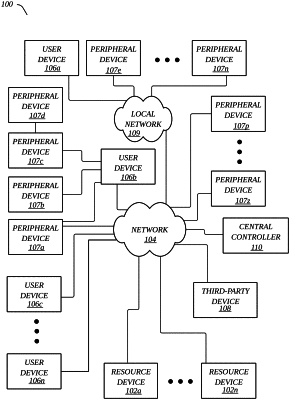| CPC A61B 5/6803 (2013.01) [A61B 5/291 (2021.01); A61B 5/369 (2021.01); G06F 1/163 (2013.01); G06F 3/012 (2013.01); G06F 3/017 (2013.01); G06F 18/22 (2023.01); G06T 7/70 (2017.01); G06V 20/10 (2022.01); G06V 20/20 (2022.01); G07C 9/37 (2020.01); G10L 15/22 (2013.01); G16H 40/67 (2018.01); H04L 63/0861 (2013.01); H04L 63/102 (2013.01); H04N 23/64 (2023.01); G06Q 10/101 (2013.01); G06Q 50/01 (2013.01); G06Q 50/205 (2013.01); G10L 2015/225 (2013.01)] | 30 Claims |

|
1. A headset for authenticating a first user based on brain activity of the first user, the headset comprising:
an electronic processing device;
a set of electrodes, each electrode operable to detect an electrical potential at a respective point on a head of a first user;
an amplifier in communication with each of the electrodes and with the electronic processing device, the amplifier operable to amplify differences in the electrical potentials detected at the respective electrodes;
a location sensor; and
a memory storing (i) location analysis instructions, (ii) stored object data, (iii) stored brain wave data, and (iv) processing instructions that, when executed by the electronic processing device, result in:
determining, at a first time and by the location sensor, a location;
identifying, by an execution of the location analysis instructions by the electronic processing device, an object at the location;
identifying, by the electronic processing device and by matching the identified object to a portion of the stored object data, the object as an object that should be familiar to the first user;
sensing, by the set of electrodes and at a second time proximate to and following the first time, a waveform representing a time-varying difference in electrical potentials across the set of electrodes;
identifying, by the electronic processing device and by comparing the sensed waveform to the stored brain wave data, a deviation of the waveform from the stored brain wave data;
identifying, by the electronic processing device and by comparing the identified deviation to a stored threshold, that the first user has exhibited a brain wave response to the object; and
authorizing, in response to the identifying of the brain wave response to the object, the first user to access a resource.
|